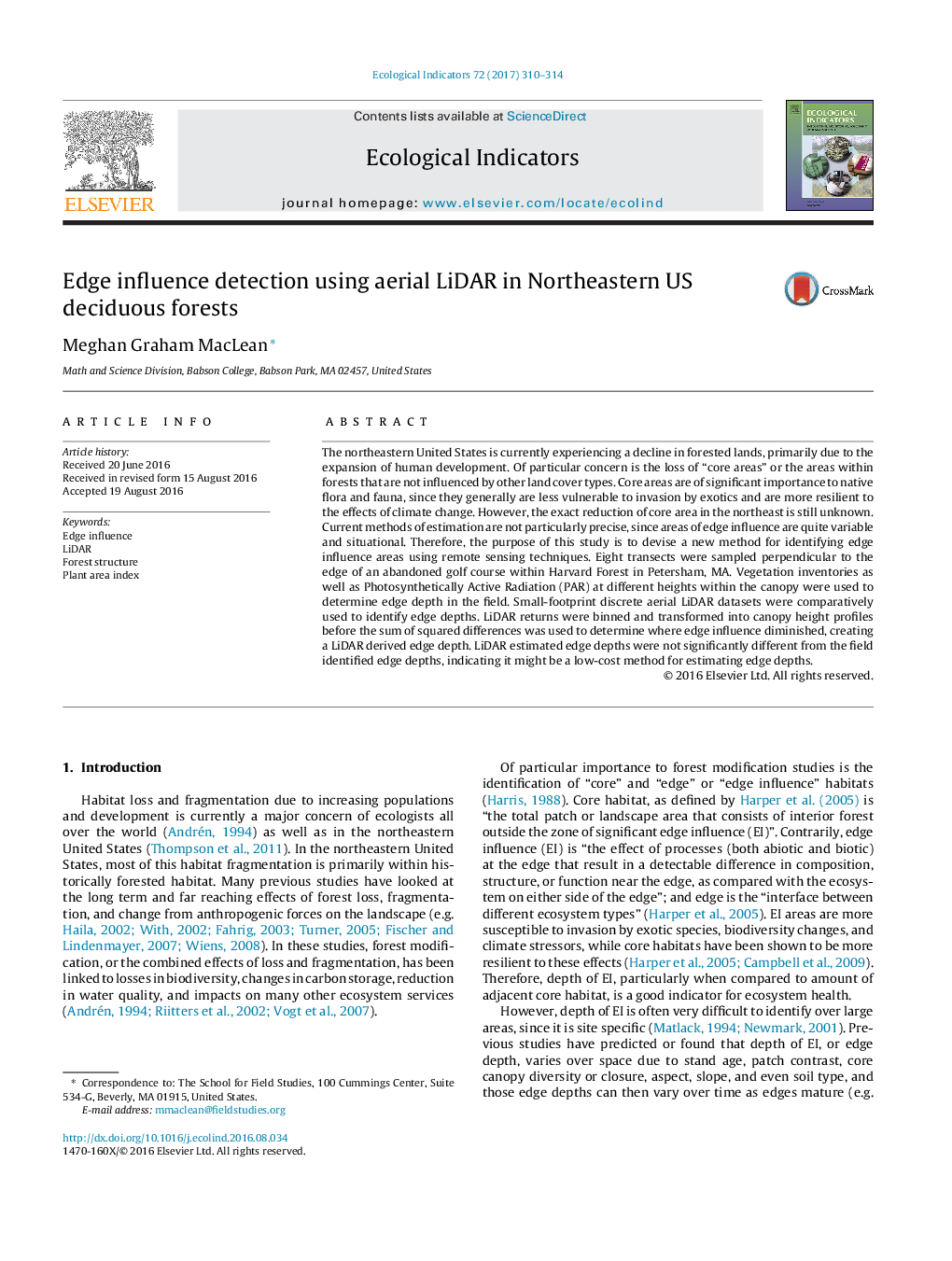| کد مقاله | کد نشریه | سال انتشار | مقاله انگلیسی | نسخه تمام متن |
|---|---|---|---|---|
| 6292764 | 1617130 | 2017 | 5 صفحه PDF | دانلود رایگان |
عنوان انگلیسی مقاله ISI
Edge influence detection using aerial LiDAR in Northeastern US deciduous forests
دانلود مقاله + سفارش ترجمه
دانلود مقاله ISI انگلیسی
رایگان برای ایرانیان
کلمات کلیدی
موضوعات مرتبط
علوم زیستی و بیوفناوری
علوم کشاورزی و بیولوژیک
بوم شناسی، تکامل، رفتار و سامانه شناسی
پیش نمایش صفحه اول مقاله

چکیده انگلیسی
The northeastern United States is currently experiencing a decline in forested lands, primarily due to the expansion of human development. Of particular concern is the loss of “core areas” or the areas within forests that are not influenced by other land cover types. Core areas are of significant importance to native flora and fauna, since they generally are less vulnerable to invasion by exotics and are more resilient to the effects of climate change. However, the exact reduction of core area in the northeast is still unknown. Current methods of estimation are not particularly precise, since areas of edge influence are quite variable and situational. Therefore, the purpose of this study is to devise a new method for identifying edge influence areas using remote sensing techniques. Eight transects were sampled perpendicular to the edge of an abandoned golf course within Harvard Forest in Petersham, MA. Vegetation inventories as well as Photosynthetically Active Radiation (PAR) at different heights within the canopy were used to determine edge depth in the field. Small-footprint discrete aerial LiDAR datasets were comparatively used to identify edge depths. LiDAR returns were binned and transformed into canopy height profiles before the sum of squared differences was used to determine where edge influence diminished, creating a LiDAR derived edge depth. LiDAR estimated edge depths were not significantly different from the field identified edge depths, indicating it might be a low-cost method for estimating edge depths.
ناشر
Database: Elsevier - ScienceDirect (ساینس دایرکت)
Journal: Ecological Indicators - Volume 72, January 2017, Pages 310-314
Journal: Ecological Indicators - Volume 72, January 2017, Pages 310-314
نویسندگان
Meghan Graham MacLean,